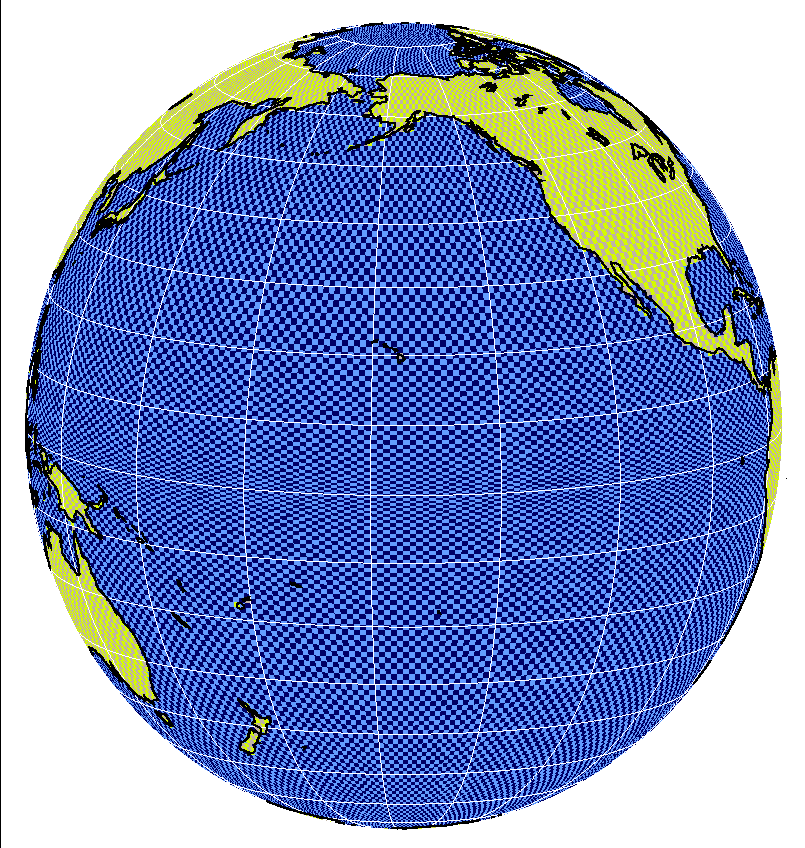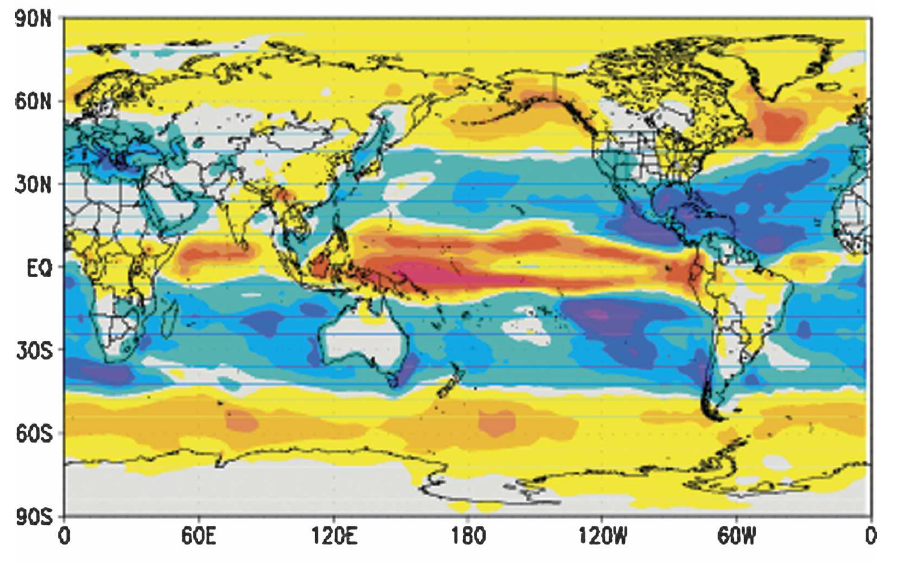| Toward Gridspec |
|---|
| why gridspec? |
| horizontal and vertical grid diversity |
| use case 1: query grid type |
| use case 2: compare data from different grids |
| use case 3: create grids for an earth system model |
| gridspec |
| tools for creating and using Gridspecs |
| gridspec implementations |
| The GENIE gridspec |
| The ESC gridspec |
| The NMM gridspec |
First of all, take a look at this 360x200 OM3 grid used by GFDL's IPCC ocean model:

While it is nominally described as a 1-degree ocean model, the
resolution near the Equator is much finer. Similarly, knowing that an
atmospheric model uses the sigma_coordinate and has 31 vertical levels
does not answer the question, "Is the tropopause well-resolved in this
model?" If you wanted to plot maps side by side from different models,
you would want more precise information about the location of each
model grid cell.
So the amount of information you can extract from IPCC documentation tables, as in our first use case, is quite minimal. It's quite remarkable, then, that scientists are carrying out analyses such as this example, from Held and Soden (2006), which shows a map of some quantity1 averaged across 20 different models from the IPCC archive.

How did Held and Soden pull this off? This is again through the magic of metadata standards. Besides the grid description that the producers of the model output have entered into the the IPCC Model Documentation Table, each dataset itself also contains some rather detailed information about each grid cell, recorded following the CF Conventions. For all the models in the IPCC archive,
- The grid is required to be a
lon_lat_grid. - Each variable location is associated with a specific geographic longitude and latitude.
- Each variable location is associated with a
cell, specified by abounding boxsurrounding the nominal location.
Given that all datasets conform to these stipulations, it turns out to quite straightforward to perform analyses such as Held and Soden (2006). Metadata standards are the cornerstone of the scientific tour de force that is the IPCC archive.
But what if the grid were not a lon_lat_grid, but instead one of the
more exotic ones in the grid menagerie?
1 It happens to be δ(P-E), though that's irrelevant to this example.
| " . $rss->channel['title'] . " entries on $subj |
|---|
| $title |
| $title |